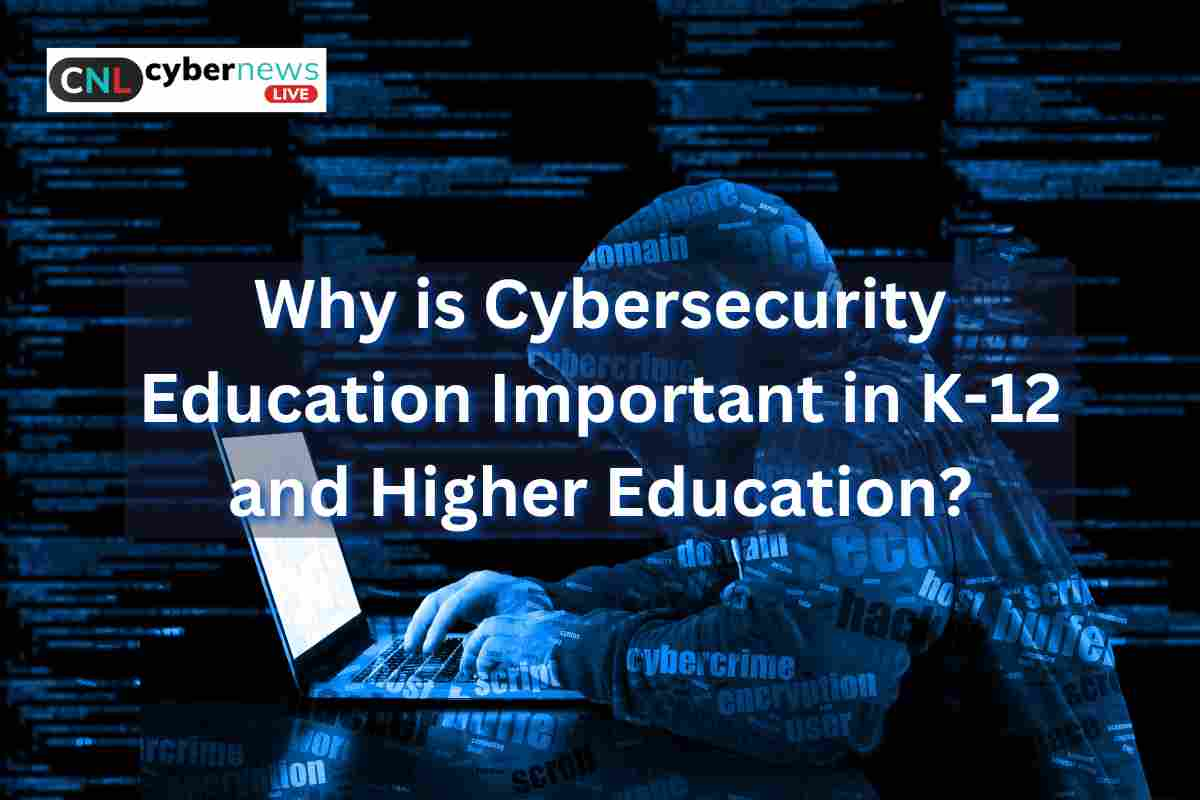
Why is Cyber Security Education Important in K-12 and Higher education?
The following article is about the critical need for cybersecurity education in both K-12 and higher education. In our highly digital world, cyber threats are pervasive, especially for institutions like schools and universities that store vast amounts of sensitive data. Cyber security education equips individuals with the knowledge and skills to recognize, prevent, and respond to these threats. It fosters responsible use of technology, ensuring a safe online environment for learning. The text highlights various cyber threats commonly faced by educational institutions, emphasizing the necessity for robust cybersecurity measures and continuous education to mitigate risks effectively.
Cyber security education is an essential and pressing need in both K-12 and higher education institutions. In our increasingly digitized world, where technology is omnipresent, the potential for cyber threats and attacks is greater than ever.
Schools and universities, as custodians of vast amounts of sensitive data, including personal and financial information, research, and intellectual property, are prime targets for malicious actors. Hence, educating students and faculty about cybersecurity is critical to safeguarding the integrity, confidentiality, and availability of this information.
It equips individuals with the knowledge and skills to recognize, prevent, and respond to cyber threats, fortifying the educational sector against evolving digital risks. This introductory paragraph delves into the profound importance of integrating cybersecurity education at both the foundational and advanced levels of learning.
What is Cyber Security Awareness?
Cybersecurity awareness means knowing how to stay safe and secure in the digital world. It’s like understanding how to lock your house to keep robbers out, but for your computer and personal information.
Being aware of cybersecurity helps you recognize potential dangers online and learn how to protect yourself and your devices. It’s about knowing the dos and don’ts, like creating strong passwords, not clicking on suspicious links, and being careful with what you share online.
Just like we learn to look both ways before crossing the street, cybersecurity awareness teaches us to be cautious while using the internet.
Why is Cyber Security Important in Education?
Cybersecurity is crucial in education to keep students, teachers, and schools safe while using technology. Here’s why it’s important:
- Protect Personal Information: Schools store a lot of personal data like names, addresses, and grades. Cybersecurity keeps this information safe from hackers who might misuse it.
- Safe Learning Environment: With good cybersecurity, students can use the internet for learning without worrying about harmful content or cyberbullying.
- Prevent Disruptions: Cyber-attacks can disrupt online classes, exams, or school operations. Cybersecurity measures prevent such disruptions.
- Teach Responsibility: By learning about cybersecurity, students understand how to use technology responsibly and stay safe online, a skill they’ll need in the future.
- Secure Future Technologies: As technology advances, schools need to keep up. Cybersecurity ensures that new technologies are used safely and efficiently.
In simple words, cybersecurity in education helps keep personal information safe, makes learning online secure, and prepares students for a tech-savvy future.
What are the Common Cyber Sector Incidents Happening in Schools?
Cyber incidents in schools can be challenging. Here are common ones:
Phishing Attacks
Phishing attacks are deceitful attempts made through seemingly legitimate emails or messages, aiming to deceive students or staff into revealing sensitive information such as passwords, credit card numbers, or personal details.
These fraudulent messages may pose as trusted sources, like educational institutions or reputable organizations, prompting the recipients to click on malicious links or download harmful attachments.
Once accessed, these cybercriminals can exploit the obtained information for unauthorized access to accounts, data theft, or even financial fraud. It’s vital to educate individuals to recognize and avoid falling victim to these deceptive schemes to safeguard their personal and organizational data.
Ransomware
Ransomware is a type of malicious software that encrypts or locks files and data on computers or networks, rendering them inaccessible to the users. The attackers demand a ransom, usually in cryptocurrency, to provide a decryption key and unlock the files.
In educational settings, a ransomware attack can significantly disrupt school operations by paralyzing essential systems, hindering access to critical educational resources, student records, teaching materials, and administrative functions.
The financial and operational consequences of ransomware attacks can be severe, emphasizing the need for robust cybersecurity measures and continuous education to prevent such incidents.
Data Breaches
Data breaches occur when unauthorized individuals or cybercriminals gain access to sensitive information stored within a school’s systems. This information often includes personal and academic records of students, staff, parents, and sometimes even financial data.
Cyber attackers exploit vulnerabilities in the school’s networks or systems to access this data. Once accessed, they may misuse the information for identity theft, financial fraud, or other malicious purposes.
In the educational context, a data breach can lead to the exposure of students’ private information, academic performance records, contact details, and more. This breach of privacy and confidentiality can have significant consequences, eroding trust in the educational institution and potentially causing emotional distress for those affected.
Unauthorized Access
Unauthorized access refers to intruders gaining entry into the school’s computer systems, networks, or databases without proper authorization. These intruders can be hackers, former students, disgruntled employees, or individuals with malicious intent.
Once they gain access, they can tamper with data, steal sensitive information, or disrupt the functioning of the systems. This unauthorized intrusion violates the privacy and security of the school’s digital infrastructure. It jeopardizes the integrity and confidentiality of critical data, including student records, financial information, and confidential communications.
Cyberbullying
Cyberbullying involves using digital platforms to intimidate, harass, embarrass, or threaten others, particularly students, through hurtful words, rumors, or offensive actions. This harmful behavior occurs on various online platforms like social media, messaging apps, emails, or online forums.
Cyberbullies may target individuals repeatedly, aiming to undermine their self-esteem, social standing, or mental well-being. Things like spreading rumors, embarrassing photos or videos, sending threatening messages, etc. are considered as cyberbullying activities.
Educational environments become conducive to learning and growth when students feel safe and respected, both physically and online. Addressing cyberbullying requires fostering a culture of digital respect and empathy, educating students about responsible online behavior, and providing them with resources to report and combat cyberbullying effectively.
Denial of Service (DoS) Attacks
Denial of Service (DoS) Attacks is a category of cyber threats where online services, networks, or websites are deliberately flooded with an overwhelming amount of traffic. In an educational context, such attacks can be severely disruptive:
- Online Class Disruptions: Educational institutions increasingly rely on online platforms for conducting classes. A DoS attack can overload these platforms, causing delays, interruptions, or even halting classes altogether. This hampers the learning process and frustrates both educators and students.
- Exam Interference: During critical times like exams, schools often use online systems for test-taking. A DoS attack can disrupt this process, causing stress and anxiety for students and potentially compromising the integrity and fairness of the exams.
- Resource Inaccessibility: Schools utilize various online resources for teaching, assignments, and research. A DoS attack can prevent access to these resources, hindering academic progress and the ability to complete assignments on time.
Final Thoughts on Cyber Security in Education
In conclusion, the significance of cybersecurity education in both K-12 and higher education cannot be overstated. As technology becomes increasingly integrated into academic processes and daily life, the risks associated with cyber threats grow as well.
Cybersecurity education equips students, educators, and institutions with essential knowledge and skills to protect sensitive information, digital assets, and personal privacy. It fosters a culture of responsibility, awareness, and proactive defense against evolving cyber threats.
By instilling a strong cybersecurity foundation early on and continually updating it at higher levels of education, we empower individuals to navigate the digital landscape safely, ultimately contributing to a more secure and resilient society.




